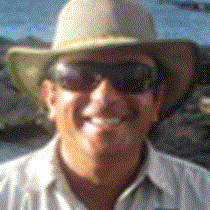Santiago Island
July is one of the best months to visit the Galápagos, due to the mild weather in the transition between the hot and cold seasons. Today the National Geographic Endeavour is anchored at Espumilla Beach, where an early-morning landing takes us near the place where Charles Darwin visited in 1835. The walk is surrounded by vegetation typical of the arid and semi-arid zones, with sandal wood, yellow cordia and cacti, among others. A few Darwin finches, Galápagos doves, mockingbirds, and flycatchers are found here.
Gratified for the exercise and fresh air, we return on board for breakfast and prepare to go to Buccaneer’s Cove, a famous anchorage from the 1800s. Here the National Geographic Endeavour deploys a flotilla of Zodiacs, kayaks and a glass-bottom boat for our water activities. We are amazed by the great diversity of marine life: large schools of razor surgeon fish, king angel, creole, parrotfish, reef sharks and sea lions are spotted in 70 degrees waters.
By the afternoon the National Geographic Endeavour has changed locations for the third time in the day, and now we are at Puerto Egas, where we have extensive snorkeling and a wonderful walk that takes us along the cinder and lava shores, where we find marine iguanas, fur sea lions and shorebirds.
It was a wonderful day spent at Santiago Island, the island chosen by Lindblad Expeditions, together with the National Park Service, to continue efforts for the eradication of introduced species that threaten the native species here.




